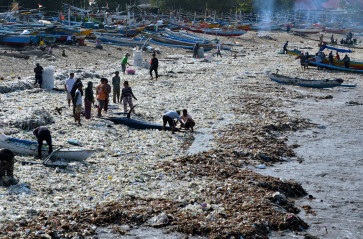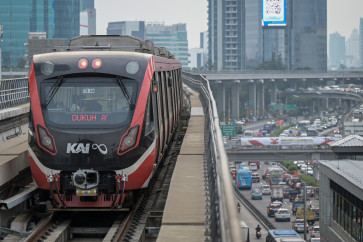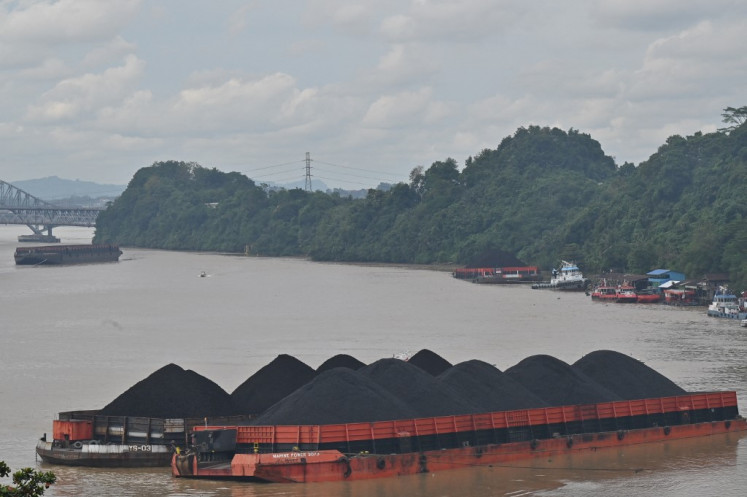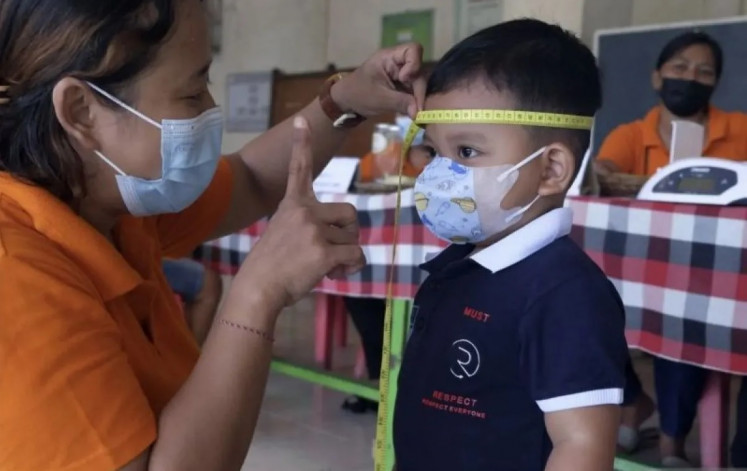Poland - A blend of history & nature
Picture perfect: A replica of the âBlack Pearlâ ship docks at Gdansk, ready to transport tourists to the Westerplatte Monument
Change text size
Gift Premium Articles
to Anyone

Picture perfect: A replica of the 'Black Pearl' ship docks at Gdansk, ready to transport tourists to the Westerplatte Monument.
'When the prisoners walked into the first gate, they thought life wouldn't be that bad because the compound looked nice. It's like a paradise. But then, they marched through to the second gate and Hell had been waiting for them.'
These words were narrated by Stanislaw Swigon, a guide at Stutthof. Stutthof used to serve as a Nazi concentration camp, located in a secluded area near the Sztutowo township in the northern part of Poland.
Swigon, himself a survivor of the camp, recalled his Hellish experiences when he was captured by the Nazis. He was only 14 back then. He and other children received help from older prisoners to stay alive with only two slices of bread every single day.
The Stutthof camp was set up to imprison Polish intellectuals. There were two rows of barracks where prisoners were forced to cramp in narrow rooms, so narrow that the prisoners were forced to sleep while seating. The camp was in operation between 1939 and 1945, and during that six-year period, more than 85,000 people died of the total 110,000 inmates sent there.
Of the innumerable cruelties that took place in this hell, perhaps the most galling and gruesome was the production of soap made of human corpses, an enterprise initiated by the Nazi Dr. Rudolf Spanner.
Stutthof is not just a silent, Polish witness to World War II and its manifold cruelties. The country offers tourists a lot of historical sites for those who wish to get a glimpse of the desolation of war.
Another famous site is the Wolf's Lair ' Wolfsschanze in German or Wilczy Szaniec in Polish ' where Operation Valkyrie took place. Located in the Masurian woods, about 8 kilometers away from the Ketrzyn township in the northeastern part of Poland, the site used to be a highly secretive and well-hidden Nazi complex.
The 6.5-square-kilometer complex was named after Hitler's nickname of 'Wolf'. Today, we can only see debris from the original buildings.
'Hitler decided to set up his new headquarters here because the location is in the middle of nowhere. And he made the right decision to layer the existing buildings with heavy structures made of concrete as a defense against possible air attacks,' explained tour guide Jadwiga Korowaj, who accompanied our group.
Operation Valkyrie ' which was brought onto the silver screen by Tom Cruise in 2008 ' was a failed attempt by Claus von Stauffenberg to topple Hitler on July 20, 1944. The bomb that von Stauffenberg carried inside his briefcase exploded but Hitler survived and only suffered minor injuries.
Von Stauffenberg and his allies were executed, while his other accomplices were detained.
Those eager to learn about World War II must also visit the famous Westerplatte in the Gdansk harbor channel. The site was the location of the first clash between Poland and Germany that led to World War II in Europe.
To reach the Westerplatte, we left Gdansk on a replica ship of 'The Black Pearl', from Disney's famous franchise Pirates of the Caribbean, and passed through the shipyard before reaching the other end.
One should not miss the sad story of the Polish Jewish community during World War II. The inhumane torture that they suffered is well documented at the POLIN Museum of the History of Polish Jews in Warsaw.
The museum, located on the site of the former Warsaw Ghetto, featured a multimedia narrative with interactive installations. The installations tell the story of the thousand-year history of the Jewish community in Poland, which was once the largest Jewish community in the world. The highlight of the exhibition is a replica of a 17th Century wooden synagogue.
Anna Sembiring, an Indonesian working as a tour guide at the museum, revealed that many Jewish people had come and handed over the remnants from their deceased family members killed during the German occupation back in the early 1940s.
'Sometimes they told very touching stories about certain items,' she said.
Anna showed off a conserved piece of paper and explained that it was actually a certificate.
'This is a certificate for any Polish person who helped save Jewish people [from being executed]. This shows their heroism,' she said.
There are eight galleries inside the museum that depict the history of the Jewish community in the country, particularly during the Holocaust, where around 90 percent of the 3.3 million Polish Jews were killed.
But Poland is not only about the dark days of World War II. The country offers awe-inspiring natural beauty such as the Tricity of Gdansk, Gdynia and Sopot, located along the northern coastline of the country, facing the Baltic Sea.
The Knyszyn Forest Landscape Park, located in the northeastern part of Poland, allowed us to take a ride along the forest in a horse-drawn carriage. We passed rows and rows of pine trees, enjoying the cool summer breeze. The carriage driver told us that many couples used the ride to express their love to each other and he showed us flags from different countries left behind by the lovey-dovey couples.
In the Knyszyn Forest Park Museum, which was overrun by small school children when visited, we saw the stuffed animal collection including the famous European Bison. We had hoped to see these glorious creatures for real during our journey to Kruszyniany to visit the Tartar community, but alas it was not to be. But the deliciousness of Tartar cuisine lifted our spirits considerably.
Apart from famous Tartar food, Poland is well known for its apples and strawberries. And the best place to buy, of course, is at a local market such as at the Hala Mirowska market in Warsaw. Inside the market, we tried different types of strawberries ' they were all big, sweet and a little bit sour, but very fresh.
Despite all the beauties that Poland can offer to us, what makes the country unique and glorious is that it has rightly decided to preserve some remnants of the brutality and evil of World War II to remind future generations that vicious crimes against humanity really did happen in the country, and in many parts of the world at that time. Poland reminds us of the past, so that we might think more clearly about our future.
' Photos by JP/Primastuti Handayani









